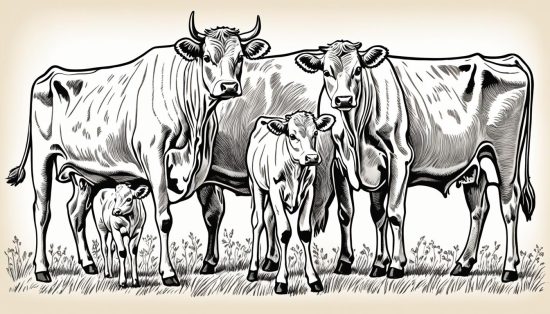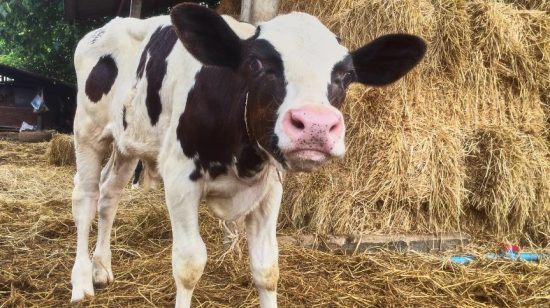What Sound Does a Cow make? The Iconic Moo Explained
Uncover the mystery behind the iconic moo as we delve into what sound a cow makes and the nuances of bovine communication.
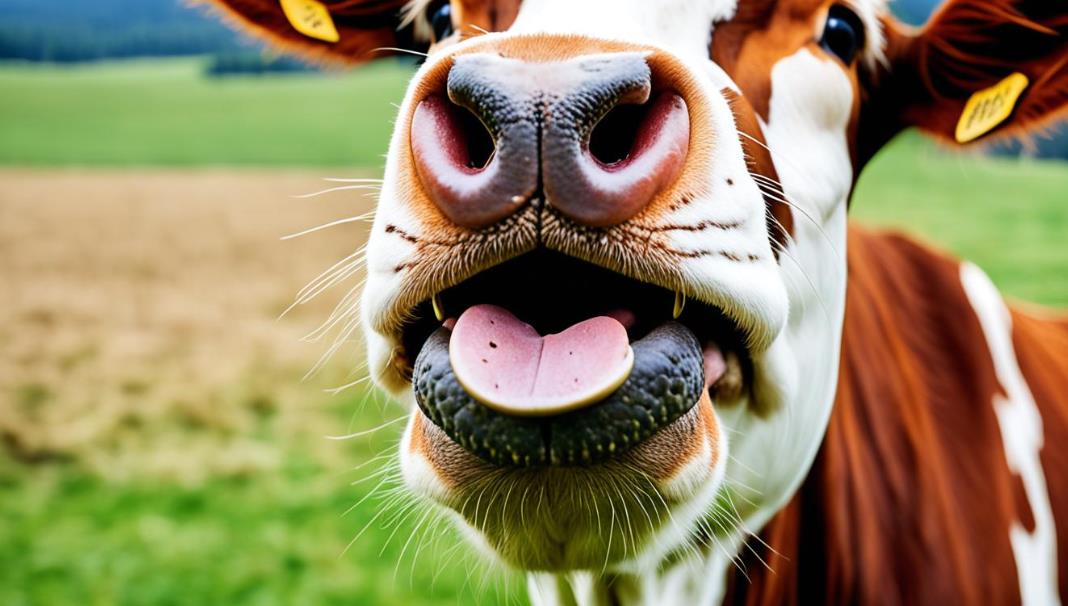
Did you know that cows have a unique way of communicating? These gentle creatures are known for their iconic sound, commonly referred to as a “moo.” But what does that sound really mean? Understanding the meaning behind the moo can provide valuable insights into bovine behavior and socializing. It’s not just a random noise – it serves a purpose.
Cows use their distinctive moo to communicate with other cows and their surroundings. Whether it’s calling out to their calves, expressing hunger or discomfort, or simply greeting each other, the moo is an essential part of their communication repertoire. By decoding the language of mooing, we can gain a deeper understanding of their needs, emotions, and interactions.
But the significance of cow sounds extends beyond the barnyard. Mooing has become deeply ingrained in our culture, often making appearances in advertising and children’s media. The iconic “moo” sound is frequently used to evoke a sense of rural charm, freshness, and wholesome products. It’s a sound that resonates with people of all ages, creating a connection between humans and these gentle giants.
Understanding Cow Communication: The Significance Behind the Moo
Cows have a unique way of communicating with one another and their surroundings through vocalizations, including the iconic “moo.” These cow vocalizations serve as an essential form of communication and play a significant role in bovine social behavior.
Cows moo for various reasons, and understanding these vocalizations can provide valuable insights into their behavior and social dynamics within herds. The mooing sound is often used as a way to express different emotions, such as signaling hunger, calling out to other cows, or expressing distress or discomfort. Cow communication through mooing also plays a crucial role in establishing hierarchy within herds. Dominant cows often use their vocalizations to assert their position and maintain social order. By listening to their mooing, cows can gather important information about their social environment, such as detecting potential threats or identifying individuals within the herd.
From Lowing to Mooing: Deciphering Cow Sounds Across Cultures

The way cows produce sounds and the variations in cow vocalizations can differ across different cultures and languages. While the standard representation of a cow’s sound is often referred to as “moo” in English-speaking countries, other languages may have their own unique onomatopoeic interpretations.
Exploring different cow sounds across cultures can provide insights into the complexity of bovine communication. It highlights the diversity of human interpretations and the connection between language and animal perception. Understanding how cow sounds vary worldwide deepens our understanding of the significance of cows within different cultural contexts.
Furthermore, deciphering cow sounds across cultures can also shed light on the universal aspects of cow communication. Despite linguistic differences, cows across the globe rely on vocalizations to communicate similar messages, emphasizing the fundamental importance of mooing as a means of communication in bovine social behavior.
What Sound Does a Cow Make?
Cow sounds are not universal and can vary across different languages and cultures. Each culture has its own onomatopoeic representation of the sound a cow makes. It’s fascinating to explore how cow sounds are interpreted and expressed around the world.
Comparing cow sounds in different languages can provide insights into the diversity of onomatopoeia used to mimic the sound of a cow. For example, in English, we commonly say “moo”, while in other languages, such as Spanish, it’s “muu” and in French, it’s “meuh”. These variations highlight the unique ways people across cultures perceive and reproduce the sound of cows.
Onomatopoeia is an expressive form of language that aims to imitate or represent natural sounds. The specific sounds chosen to represent cow sounds may vary based on a culture’s phonetics and the particular qualities they associate with a cow’s vocalization.
Localizing Moo: How Cultures Interpret the Cow’s Call
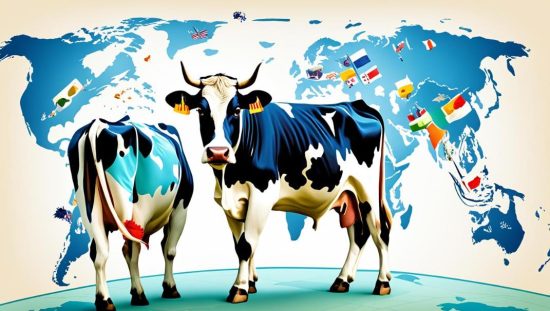
The cultural interpretation of cow sounds can reveal interesting insights into the significance and symbolism of cows in various societies. Some cultures may associate cow sounds with specific meanings or beliefs, such as fertility, abundance, or the tranquility of rural life.
This cultural interpretation can also extend to artistic expressions, such as folk songs and traditional stories, where cow sounds play a role in conveying emotions, stories, or cultural values. Understanding these cultural interpretations adds depth to our understanding of the role cows play in different societies. Exploring the onomatopoeia of cow sounds in different languages and the cultural interpretations of these sounds offers a glimpse into the rich variety of human language, perception, and cultural associations. It highlights the beauty and diversity of how cows are represented and understood in different parts of the world.
The Biological Basis of Cow Sounds: What Science Tells Us
Intrigued by the unique vocalizations of cows and curious about their origins? Look no further, as science has unraveled the biological basis of cow sounds, shedding light on the fascinating world of bovine communication.
Veterinary experts have delved into the diverse vocalizations of cows, providing valuable insights into why these majestic animals moo. By studying cow vocalizations, veterinarians have discovered that different mooing behaviors indicate distinct messages. For example, a deep bellowing sound can indicate an expression of discomfort, while a high-pitched moo may serve as a call for attention or signaling reproductive readiness. These veterinary insights help us understand the nuanced language of cows and provide crucial information for their care and well-being.
Examining Distinct Vocal Patterns of cows
Researchers have identified distinct vocal patterns and sound modes in cows, which contribute to their unique communication style. These sound modes encompass various vocalizations, ranging from low-frequency rumbles to higher-pitched vocalizations that carry over long distances. By examining these different modes and patterns, scientists gain a deeper understanding of how cows communicate within their herds and their surrounding environment. This knowledge enables us to decode the complexities of cow vocalizations and appreciate the richness of their communication repertoire.
As we explore the biological basis of cow sounds, veterinary insights, and the examination of distinct vocal patterns, we unravel the intricate language of cows. The more we understand their vocalizations, the better equipped we are to ensure their welfare, establish effective animal husbandry practices, and strengthen the human-animal bond.
Cows in the Animal Kingdom: Understanding Their Vocal Range
Cows, like many other animals, use vocalizations to communicate with each other and their environment. Understanding the vocal range of cows is essential for interpreting their communication accurately. Differentiating between the various noises cows make, such as lowing and mooing, can provide valuable insights into their behavior and needs.
To better understand the vocal range of cows, it’s important to compare their vocals with those of other farm animals. This comparison allows us to gain insights into the distinctiveness of cow sounds and their role within the animal kingdom. By examining the vocalizations of cows alongside other animals, we can appreciate the unique characteristics of cow vocalizations that set them apart.
Is it a Cow Lowing or Mooing? Differentiating Between Bovine Noises
When it comes to cow vocalizations, there are different sounds that they can make. One of the most well-known sounds associated with cows is the iconic moo. However, cows also produce other vocalizations, including lowing, which is a deeper and prolonged sound often associated with calling or seeking attention.
Differentiating between the various bovine noises is important for understanding their communication. Each sound carries its own meaning and serves different purposes. By identifying and interpreting the specific vocalizations of cows, we can gain insights into their behavior, emotions, and needs.
Comparing Cow Vocals with Other Farm Animals
While cows have their own unique vocal range and sounds, it’s interesting to compare their vocals with those of other farm animals. Each species of farm animal has its distinct way of communicating, and understanding these differences can deepen our understanding of their behaviors and social dynamics.
By comparing cow vocals with other farm animals, such as pigs, chickens, and goats, we can appreciate the diversity of animal communication and the unique characteristics of each species’ vocalizations. This comparison highlights the importance of vocalizations in animal communication and the rich tapestry of sounds that exist in the animal kingdom.
The Role of Mooing in Cattle Farming and Husbandry
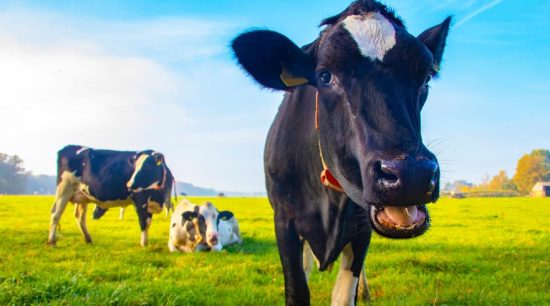
When it comes to cattle farming and husbandry, mooing plays a crucial role in ensuring the well-being and overall health of cows. By interpreting cow sounds, farmers and ranchers can gain valuable insights into the needs and behaviors of their herd, allowing for better farm management practices.
One of the key benefits of understanding cow sounds is the ability to identify signs of distress or discomfort in the animals. By closely listening to the pitch, duration, and intensity of their moos, farmers can determine if a cow is experiencing pain, hunger, or other issues that may require intervention. This enables timely and appropriate action to be taken, promoting the optimal health and welfare of the herd as a whole.
In addition, interpreting cow sounds can also provide valuable information about cow behavior and social dynamics within the herd. It allows farmers to recognize specific vocalizations associated with mating, calving, or even communication between mother cows and their calves. This knowledge facilitates more effective breeding programs and improved understanding of the herd’s overall well-being.
The Connection Between Cows’ Moos and Their Well-being
The mooing of cows is closely tied to their overall well-being. Happy and healthy cows tend to have a distinct and consistent vocalization pattern, while cows experiencing stress or discomfort may exhibit abnormal or inconsistent moos. By listening attentively to the moos of their cows, farmers can gauge the general health and contentment of the herd and take appropriate measures to address any issues that may arise.
Furthermore, recognizing the connection between cows’ moos and their well-being goes beyond immediate farm management. It underscores the importance of providing cows with a comfortable and stress-free environment, including access to proper nutrition, clean water, and suitable shelter. By prioritizing the well-being of the cows, farmers can ensure not only the health and productivity of their herd but also the sustainability of their farming practices.
FAQs on what sound does a cow make
Why do cows moo?
Cows moo to communicate with each other and their surroundings, indicating various purposes and behaviors.
What is the cultural significance of cow sounds?
Cow sounds, such as mooing, have cultural significance, being used in advertising and children’s literature.
What is the biological basis of cow sounds?
Cow sounds, including mooing, have a biological basis, and understanding them can provide insights into bovine communication.
How does the vocal range of cows compare to other farm animals?
Cows have a distinct vocal range, and differentiating between their various noises, such as lowing and mooing, can help interpret their communication.
How does mooing play a role in cattle farming and husbandry?
Interpreting cow sounds, including mooing, can assist in better farm management and ensure the well-being of the cows.

